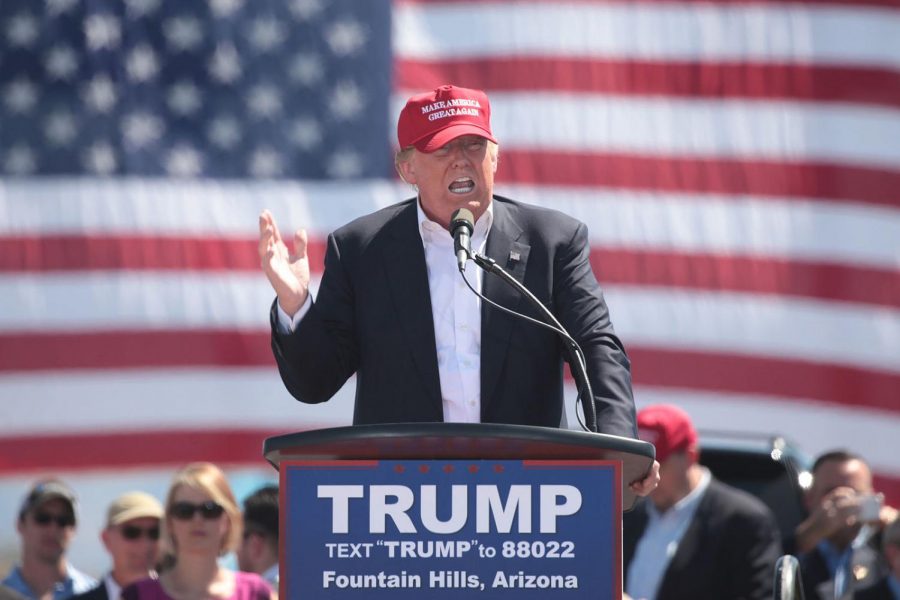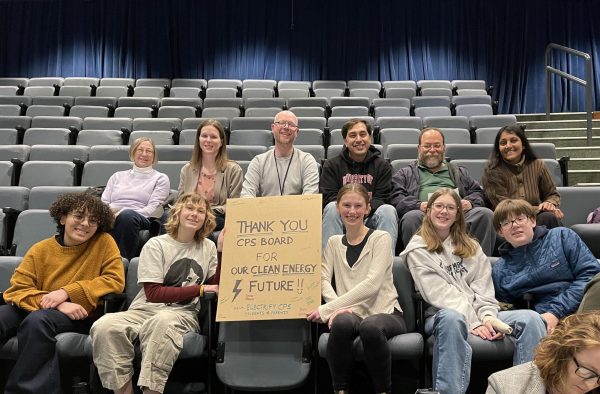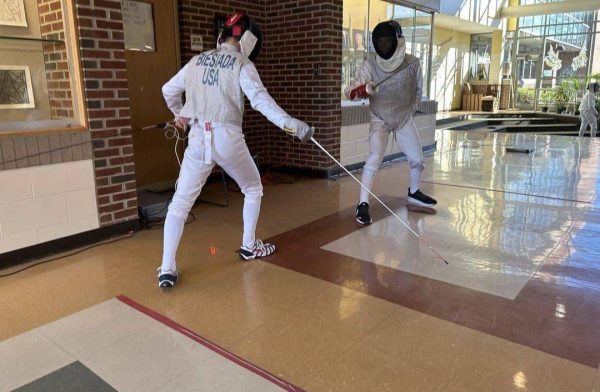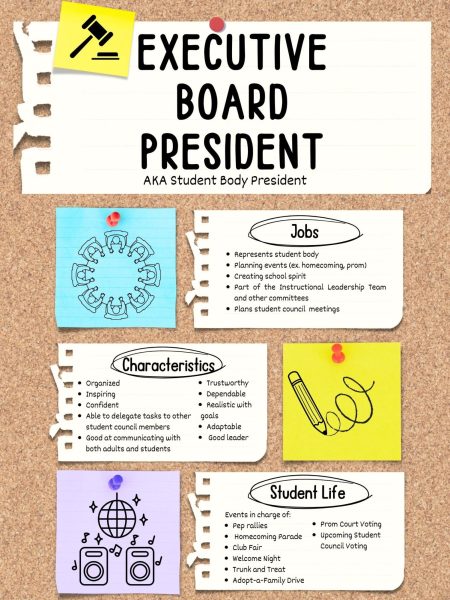The Election Heats Up Over the Summer
Gage Skidmore/ Wikimedia Commons
Donald Trump speaking at a campaign rally in Arizona in March of 2016.
Presidential elections only come once every four years, but it seems like the election itself takes an entire year off the cycle. The first whiffs of an election on the way were in the spring of 2015, a full year and a half before voters would reach the polls. News channels buzzed with possible candidates, from Hillary Clinton to Joe Biden, or Jeb Bush to Bobby Jindal; there were a total of 19 major candidates for both sides once everything was set and done. There were five democratic candidates, and 15 republicans, from every corner of the country. The big players were Hillary Clinton and Bernie Sanders for the Democratic Party and Jeb Bush, Marco Rubio, John Kasich, Chris Christie, Ted Cruz and Donald Trump for the Republican Party. There were more candidates in this election than ever before, with comedian Stephen Colbert even doing a parody of the Hunger Games, the “Hungry for Power Games,” making a Hunger Games style announcement for the “fallen” candidates once each eventually suspended their campaigns.
So how does our election system work? There are two parts to a presidential election cycle: the primaries and the general election. The primaries are when voters pick who they want to be their party’s candidate, and the general is the main election between those two candidates and any third party nominees. Each state has a different way of doing the primaries but there are generally two systems; the primary system and the caucus system. The primary system is just like the general election; people go to their local voting booths and cast their ballots for the desired candidates and the one with the most votes wins. The caucus system, however, is a little more complicated. Iowa, Nevada, Minnesota, Colorado, Hawaii, Maine, Idaho, Kansas, Wyoming, Alaska, Washington, Florida and North Dakota use the caucus system. It is a relatively complicated system; at a designated time, all voters in a district show up in a location and stand in a group to designate their support for a candidate. Whichever candidate has the largest group wins the district. The confusion between these systems only adds to the complication required to vote and results in lower voter turnouts nationwide.
Ever since day one, Donald Trump has had tough policies on immigration. After gliding down his escalator to the podium in Trump Tower for his announcement speech, “The Donald” made his stance on Mexican immigration clear: “When Mexico sends its people, they’re not sending their best … They’re sending people that have lots of problems and they’re bringing those problems with them. They’re bringing drugs, they’re bringing crime, they’re rapists and some, I assume, are good people.” This statement from his announcement speech sent ripples through the political community, with pundits from NBC to Comedy Central giving their attention to the real estate mogul turned reality TV host. This attention never went away for Trump, with some saying that the attention from the media directed voters’ attention, and therefore their votes, to him. As time went on, Trump’s policies and statements got more and more controversial. He once called out Fox News host Megyn Kelly for her “hostile” questioning during a debate, saying that she had “blood coming out of her wherever,” angering female voters. Later in the election cycle, he called fellow candidate Carly Fiorina ugly, saying “Look at that face. Would anyone vote for that?” again angering the female demographic that is increasingly siding with Clinton over the course of the campaign, with 57% of voters saying he is biased against them in a recent Washington Post/ABC News Poll released Sept. 10. In June, Trump made statements against the judge presiding over his Trump University case, saying that because of the judge’s Mexican heritage, he is unable to be fair in his ruling. The case has now moved to Federal Court following an appeal by Trump. On August 10, Trump at a Florida campaign rally called President Obama “the founder of ISIS. He’s the founder of ISIS. He’s the founder. He founded ISIS.” This claim has even been reputed by fellow Republicans, with many major Republican figures coming out against him. A Washington Post article listed the current number to at least 110 people so far, with some members of his former staff now coming out against him. These people are current or former Republican members of government, political figures or campaign figures who have said either that they will not vote for Trump, or that they will vote for Clinton, and that number is only the people who have announced this publicly.
Even though Trump has been stuck in scandal throughout his campaign, Clinton has not escaped either. In the early days of the campaign, Republicans brought back the Benghazi scandal. On Sept. 11, 2012, militants in Benghazi, Libya, assaulted and took over two U.S. diplomatic compounds, killing four americans, including the U.S. ambassador to Libya. Clinton was brought before Congress for an investigation over the summer, but it was determined that there was not enough evidence to indict her on any crime. Over the summer, the Democratic National Committee email system was hacked by an unknown source, suspected to be government-funded Russian hackers. The leaked emails nearly confirmed many voters’ suspicions that the elections were at least partially rigged toward Clinton by the DNC itself. In response to this, the DNC chair and Florida congresswoman Debbie Wasserman-Schultz stepped down, just days before their convention began, again calling into question Clinton’s honesty and trustworthiness, as well as her party’s.
This news especially angered supporters of Vermont Senator Bernie Sanders, the self-proclaimed Democratic Socialist who narrowly lost the nomination. Even though he lost, Sanders’ influence did not stop at the end of the convention. Throughout his campaign, Sanders’ liberal policies and wide support forced Clinton to move her own policies farther left. She changed position on the Trans-Pacific Partnership, a trade bill that would make it easier for jobs to go overseas, and also started supporting free community college for poor citizens, as well as at least enticing the idea of a single-payer healthcare system nationwide, an issue that was central in Sanders’ campaign.
In the week before their respective conventions, both Clinton and Trump announced their running mates. Clinton chose former Virginia Governor Tim Kaine, who has wide popularity in his state. Clinton hopes to broaden her influence with the important Latino voting demographic, as Kaine is also fluent in Spanish and is a former lawyer, famous for representing minorities in discrimination cases pro bono. Trump’s choice for vice president is Indiana Governor Mike Pence. Pence has a meager 49% approval rating in the state in the most recent polls from early this year, but closely represents many of Trump’s isolationist values. Pence opposes abortion and birthright citizenship, is a Tea Party supporter and also has experience as a lawyer, like Kaine.
Throughout the campaign, Donald Trump’s campaign managers have echoed his attitude and energy. His first campaign manager, Corey Lewandowski, was removed from the campaign after attacking Breitbart reporter Michelle Fields during a Trump rally in March. The assault charges were eventually dropped and Lewandowski was charged with battery. Lewandowski now works for CNN as a political commentator and as an advisor to Trump’s campaign. His replacement, Paul Manafort, was also caught in controversy as leaks exposed his connection with Ukraine’s ousted president Viktor Yanukovych, with Manafort receiving millions from Yanukovych’s party, which has substantial ties to Russia. After the story broke in early August,
he was removed from the campaign. This scandal has brought up many questions about Trump’s loyalty to America and his ties to Russia, with Manafort also linked to the Panama Papers scandal last year. His new campaign manager, Kellyanne Conway, has spent her first weeks on the campaign trying to solidify Trump’s policies and increase his diplomatic visibility in preparation for the upcoming debate against Hillary Clinton.
However, Clinton and Trump are not the only candidates for president. There are two other candidates this election, the Green Party’s Jill Stein and the Libertarian Party’s Gary Johnson. Johnson received 10% support in a recent New York Times poll, the best for any third party candidate since Ross Perot in 1992, who held 18% at his peak, even leading Bill Clinton and George Bush in certain states. Johnson is pushing to reach 15% support in national poll; once he reaches that number he will be included in presidential debates and would be the first since Perot to do so.
Both major candidates in the election have had their fair share of scandals, and it has affected their poll results. Trump has a record 63% unpopularity to Clinton’s 56%, according to an ABC/Washington Post poll released Aug. 28. The Dallas Morning News recently came out against Trump and for Clinton. This is a little more significant than it may seem; The Dallas Morning News has supported every single republican presidential candidate since Richard Nixon in 1968, representing the bridges being burned by Trump. This election is seen as a “lesser of two evils” situation by many, with the country losing no matter what candidate is elected. The first presidential debate is scheduled for Sept. 26, marking the first major meeting between the two candidates. Clinton has been ducking the media for months, not holding a press conference for over 250 days, and this debate will attempt to clarify her policies and the differences between the two candidates. Much is bound to happen between now and November, but what is certain is that this election will get much more exciting.
Your donation will support the student journalists of Walnut Hills High School. Your contribution will allow us to purchase equipment, cover our annual website hosting, printing costs and offset competition and conferences fees for students.

Deputy Editor-in-Chief
In his fourth year as a Chatterbox staff member, SENIOR Nick Robertson is very excited to work as the Deputy Editor-in-Chief....








